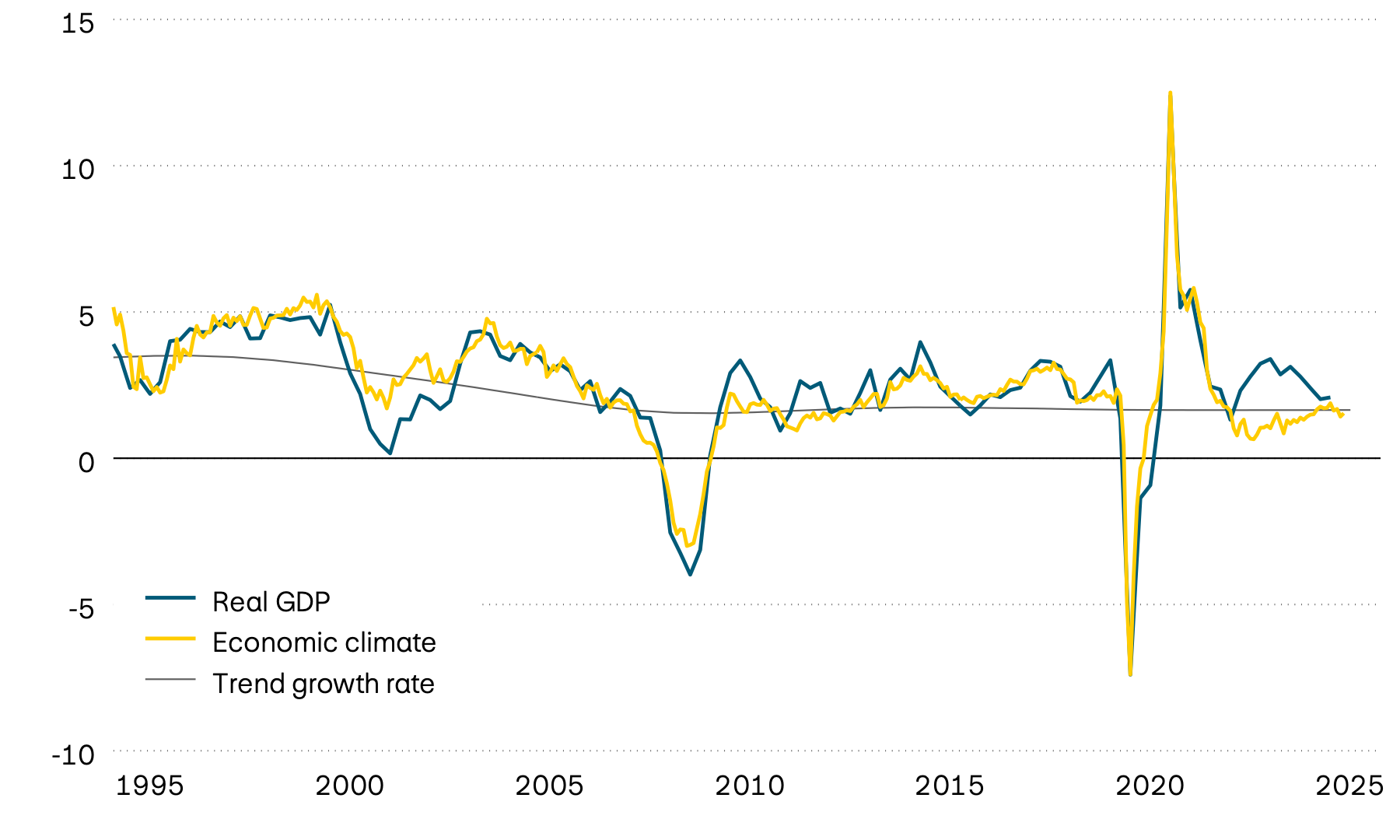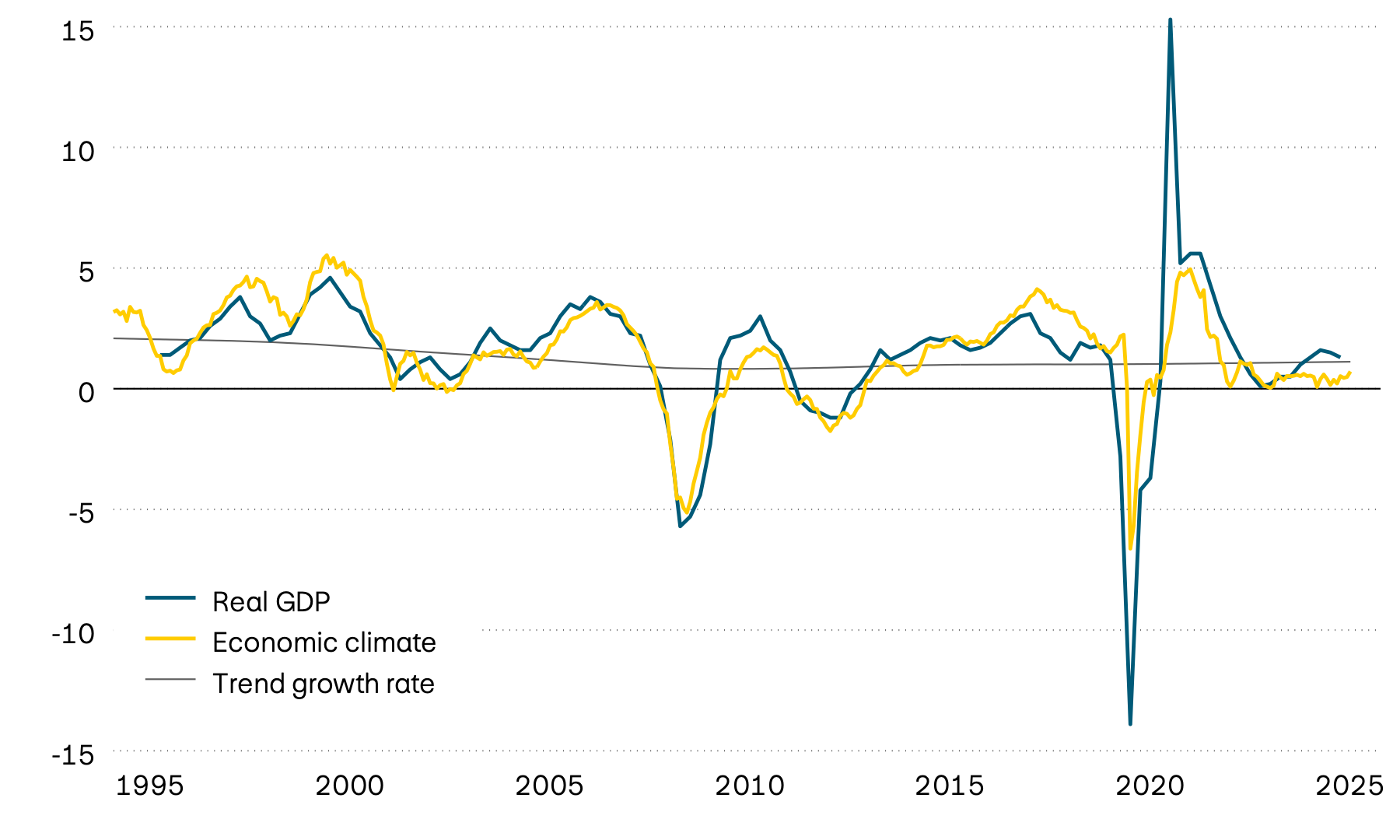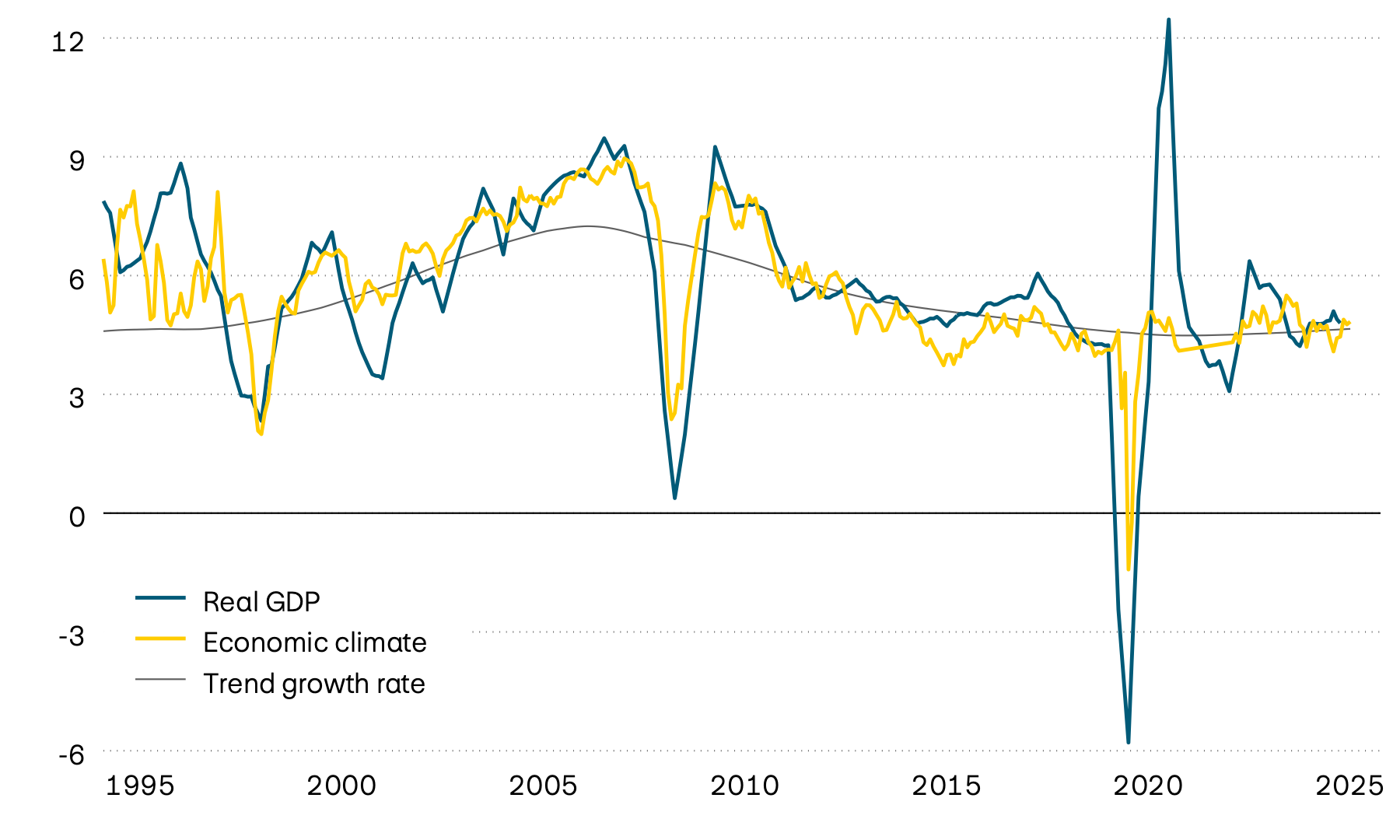Despite high tariffs on its key market, the US, the Swiss economy has so far avoided a slump. Advance deliveries to the United States are likely to sustain economic momentum until the end of the year, as many companies had previously replenished their stocks and are now gradually reducing them. Despite this, the economy has slowed significantly. Both industry and service providers expect a decline in business volumes over the coming months, while domestic demand has lost considerable momentum recently. This could indicate a period of stagnation, which is likely to further dampen already low inflationary pressures. However, the latest agreement with the US, which will see import duties for Swiss companies fall from 39 to 15 percent, gives cause for hope.
You are here:
Economy: Growth lacking breadth
The global economy is lacking momentum. While the US economy still appears strong on the surface, its momentum is increasingly losing breadth. Private consumption, a key driver of growth, is almost exclusively being fuelled by high income households, while consumer confidence has recently fallen to one of the lowest levels ever recorded. Confidence has increased somewhat in Europe, but this has not yet translated into stronger economic momentum. In China, economic activity remains well below average, and growth prospects in Switzerland are also limited due to the current US tariffs.
Growth, sentiment and trend
In percent

The longest government shutdown in US history, lasting 43 days , has prevented the release of official economic data. Estimates from private providers indicate that the US economy grew significantly again in the third quarter. However, this growth is narrowing. Outside the field of artificial intelligence and related infrastructure, investment activity has declined significantly. In addition, consumption growth is being driven primarily by high income households. This is reflected not least in the fact that consumer confidence has recently fallen to the second-lowest level ever recorded. Added to this is the continuing weakness on the labour market. Wage growth has slowed significantly, particularly for lower earners, putting pressure on many households’ purchasing power.
Growth, sentiment and trend
In percent

Economic performance in the monetary union remains below average. Momentum in industry and consumption has continued to weaken recently, with export volumes in the autumn falling below the previous year’s level. Despite the difficult environment, there are signs of a slight improvement in sentiment. Industrial and service companies are looking to the future with slightly more confidence, pointing to a moderate upturn in business activity over the coming months. However, no additional momentum is expected from monetary policy. Contrary to the expectations of the European Central Bank (ECB), inflation weakened only very slightly over the summer and autumn months. The core inflation rate, which excludes volatile energy and food prices, is still above the ECB’s target.
Growth, sentiment and trend
In percent

Economic performance in the emerging markets remains highly variable. In Asia, India remains the growth engine, recording strong upswings in both industry and the services sector. Indonesia is also performing well, with increasing economic momentum. In China, by far the largest economy among the emerging markets and the second largest in the world, economic momentum is still subdued, despite the positive growth rates. Domestic demand in particular is unusually weak, as investment is declining and consumption is growing only slightly. Economic performance is also sluggish in Latin America’s major economies, particularly Brazil and Mexico.
Growth, sentiment and trend
In percent

Global economic data
| Indicators | Switzerland | USA | Eurozone | UK | Japan | India | Brazil | China |
|---|---|---|---|---|---|---|---|---|
| Indicators GDP Y/Y 2025Q3 |
Switzerland n/a |
USA n/a |
Eurozone 1.4% |
UK 1.3% |
Japan 1.1% |
India n/a |
Brazil n/a |
China 4.8% |
| Indicators GDP Y/Y 2025Q2 |
Switzerland 1.2% |
USA 2.1% |
Eurozone 1.5% |
UK 1.4% |
Japan 2.0% |
India 7.8% |
Brazil 2.2% |
China 5.2% |
| Indicators Economic climate |
Switzerland – |
USA – |
Eurozone – |
UK – |
Japan + |
India = |
Brazil – |
China + |
| Indicators Trend growth |
Switzerland 1.2% |
USA 1.6% |
Eurozone 0.8% |
UK 1.8% |
Japan 1.1% |
India 5.3% |
Brazil 1.9% |
China 3.6% |
| Indicators Inflation |
Switzerland 0.1% |
USA 3.0% |
Eurozone 2.1% |
UK 3.6% |
Japan 2.9% |
India 0.3% |
Brazil 4.7% |
China 0.2% |
| Indicators Policy rates |
Switzerland 0.0% |
USA 4.0% |
Eurozone 2.15% |
UK 4.0% |
Japan 0.5% |
India 5.5% |
Brazil 15.0% |
China 3.0% |
Source: Bloomberg
